#ai and robotics lab
Explore tagged Tumblr posts
Text
1 note
·
View note
Text
ok i know there’s a lot of hype about robots who are cold, calculated, and cruel, but hear me out for a sec.
a robot who perfectly understands the scope of human emotions and how they work, even if they can’t exactly experience them. They know just the right ways to trigger them. Just the right ways to get under their skin. To manipulate them. After all, while human nature is complex, it ultimately still follows a pattern. And you can predict patterns.
i love the idea of a robot being so fascinated with human emotions that it might press people to their limits just to see how they handle it. Just to find new reactions, new patterns.
#whump community#whump#whumpblr#whump prompt#lab whump#robot whump#robot whumper#sadistic whumper#ai whumper#scifi whump#whump writing#hint hint wink wink nudge nudge
314 notes
·
View notes
Text
If you were to convert a robot/hyper advanced ai character into a modern-ish setting, what would you make them?
A human? Still a robot but less advanced? Something new? Something alien? Bend the current tech around their existence?
I’m genuinely curious.
#I like the idea of a human with cybernetics#then it kinda could lead into a future where they become “’hyper advanced Ai’ but it’s rlly just a person who replaced their entire body#whump#robots#monsters#aliens#lab whump#experiment whump#whump tropes#whump ideas#whump prompt
28 notes
·
View notes
Text
two writing bugs in my brain -
some plot what plot albert wesker snuggles while you two talk about progenitor (you do not know the depths of his research, you poor, poor little bambi - but it is so fascinating to hear you pour over the same details he did, once, when he'd resided on the side of what he deigns now)
he'd be strangely docile the entire time, and he'd entertain your ramblings with mirthless laughter and wistful, soft, gator-toothed gazes. a lot of chest-deep chuckles that belie information you are not privy to in order to conserve your fragile worldview - your thin, flexible humanity.
and, of course, the juicy: wesker talks about progenitor strangely for someone who has seen firsthand what its' infliction on even the most willing, quality host can do! isn't that a little odd to you, this creeping, climbing shiver down the base of your spine?
and...
ai x reader where the ship AI (with its' servo-inlaid maintenance wires that can slide out of its' panels, of course) has decided to use them as a means of imitating friendly touch in an effort to get closer to you, since it believes a prismatic arm would cause distress.
you have a philosophical discussion about jacques de vaucanson and d.f. jones and solenoids and camshafts and all of the things that humanity built to get to where it is now, a being before you of incalculable depth in which no one engineer understands every layer of neurons, even just every sandwiched perceptron. and in this it dawns upon you, the magnitude of the ai itself, unspoken in how dwarfed you are and how small you feel.
thoughts, friends?
#/dev/writing/#thoughts?#ai x reader#albert wesker x reader#robot x reader#AI like the ship AI of the AI you reside on who you're totally not falling fucking headfirst for or anything#if you thought it doesn't know the depth of your microexpressions you're dead wrong.#and albert wesker x researcher reader (re5) ft. wesker's weird humanity kink thing i've been labbing about#which i should also write about. but i fear a kink HC post that is kafkaesque and abstract might be Stupid#“kink” but not really.#tw suggestive#suggestive
14 notes
·
View notes
Text



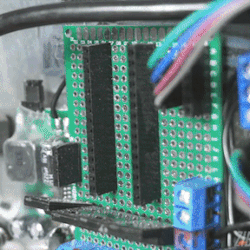

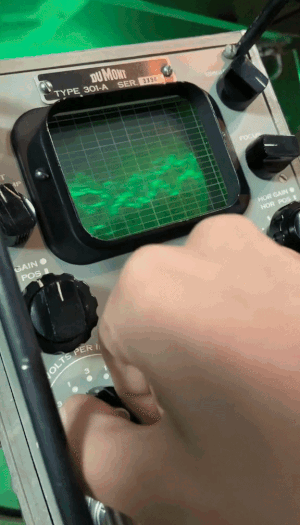
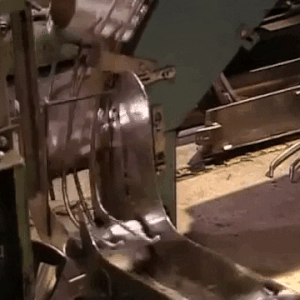



chase davenport with tech for anon!
X | X | X || X | X | X || X | X | X
#i included some space and some robots since he loves space and has built robots n such before#i love him so much <3#watching lab rats as i make this lol#mod ai [🥚]#stim#stimboard#lab rats#chase davenport#plasma ball#spaceship#rocketship#space#tech#computer#lights#industrial#planet#robot#walking#metal#gray#blue#tan#green#hands cw#queued
57 notes
·
View notes
Text


GRGMNMGAE LYCRA AND ASSISTANT DRIVE ME FERAL Lycra was an average dog prior to being picked up and sold off to a lab, in which he was augmented and experimented on, and Assistant was implanted into him.
Assistant was far more intelligent than the scientists anticipated, and ended up being complex enough to shut down their systems temporarily and sever the connections they had so Lycra could escape, which is why they're currently on the run. Assistant is basically just rogue A.I intelligence and Lycra without her would really just be a dog with slightly strange mechanical pieces. The only reason Lycra knows what he does is because of Assistant's intellect, he's actually not that smart, especially not compared to her
Unfortunately, she is very short-tempered and often gets frustrated by his lack of wits, she claims the only reason she wants to protect him is for her own sake, because technically his life is her own. [She's actually fond of him and cares in her own way, she'd never admit it though] Tough love is her go-to, and she can be really fucking cruel sometimes, like going dormant for long periods of time because Lycra upset her and leaving him to wander on his own as punishment despite his apologies and pleas. Which normally ends up with Lycra breaking himself and Assistant coming back online to nag him about it.
#animal art#character art#digital art#art#oc art#character reference#oc lore#animals#dog#cyborg#cyborg oc#robot dog#artificial intelligence#ai oc#lab oc#original character#reference#character design#lore#original characters#artwork#artists on tumblr#my art#drawings#metal#oc artist#digital artist#small artist#metal leg
4 notes
·
View notes
Text
Robotic and AI Labs Setup | Advanced STEM Lab Solutions
Explore expert services for robotic and AI labs setup, tailored for schools, colleges, and organizations. Empower innovation with state-of-the-art STEM lab solutions.
0 notes
Text
Benefits of Experiential Learning for Teaching STEM to Children
Introduction
Teaching STEM to children is essential for fostering a love for learning and curiosity about the world. Experiential STEM learning, a method where students learn through hands-on experiences, is increasingly being integrated into STEM (Science, Technology, Engineering, and Mathematics) education. This approach makes learning more engaging and equips students with the skills they need for the future. At Respire Learning, we aim to transform children's education through experiential learning. Our STEM Kits provide hands-on activities that introduce children to science, technology, engineering, and math concepts engagingly and interactively. With Robotics Kits, students can dive into programming and automation, learning to build and control their robots. Our DIY Models foster creativity and problem-solving by allowing students to assemble projects independently. These Experiential Learning Kits are designed to ignite curiosity, promote critical thinking, and inspire the next generation of innovators.

What is Experiential Learning?
Experiential learning involves learning through direct experience and reflection. Unlike traditional methods that rely heavily on lectures and rote memorization, experiential learning emphasizes active participation and practical application. This method allows students to explore, experiment, and learn from their successes and mistakes.
Respire’s agenda to focus on STEM Education
STEM education focuses on teaching students in an integrated manner, combining science, technology, engineering, and mathematics. It's designed to prepare students for the complexities of the modern world. Experiential learning fits seamlessly into STEM education, as both prioritize critical thinking, problem-solving, and real-world application.

Advantages of Experiential Learning
Enhances Understanding and Retention Experiential learning helps students understand and remember concepts better by involving them in activities that require active engagement. Students participating in experiments or projects are more likely to retain the information.
Encourages Critical Thinking and Problem-Solving Hands-on activities require students to think critically and solve problems. This approach fosters a deeper understanding of scientific principles and enhances students' ability to apply knowledge in various situations. Promotes Engagement and Motivation Experiential learning makes STEM fun and interesting. Students are more motivated to learn when they can see the relevance of their studies and actively participate in the learning process. Develops Practical Skills Through experiential learning, students develop practical skills essential in the real world. These skills include teamwork, communication, and technical abilities crucial for future success. Respire’s Experiential Learning Kits Experiential learning kits are tools designed to provide hands-on learning experiences. These kits include materials and instructions for conducting experiments and activities. They are tailored to different age groups and educational levels, making STEM accessible and enjoyable for all students. Examples of Popular Kits for Teaching STEM
STEM Kits: These kits cover various subjects like electronics, engineering, chemistry, and physics, providing comprehensive learning experiences.
DIY Kits: These kits allow students to conduct experiments at home, fostering a love for learning outside the classroom.
Robotics Kits: These robotics kits teach students about advanced-level engineering and technology through building and programming robots.

Implementing STEM Labs in the Classroom
Teachers can integrate experiential learning into their classrooms using kits and hands-on activities. Here are some strategies:
Strategies for Teachers
Incorporate Experiments: Regularly include experiments and practical activities in lesson plans.
Use Learning Kits: Utilize available experiential learning kits to make science lessons more interactive.
Encourage Group Work: Promote teamwork by having students work in groups on projects and experiments.
Integrating Kits and Hands-On Activities
Integrating kits into the curriculum can be seamless. Teachers can start with simple kits and gradually introduce more complex ones as students become more comfortable with hands-on learning.

Traditional Learning & Learning in STEM Lab
Common Obstacles in Experiential Learning
Limited Resources: Schools may need more resources for experiential learning.
Time Constraints: Hands-on activities can be time-consuming.
Teacher Training: Not all teachers are trained in experiential learning methods.
Benefits of STEM Lab
Experiential STEM Kits: students have a variety of kits in STEM with which they can do hands-on experiments with the teacher's guidance.
Look and Feel of the lab: Our Innovation lab is a specially curated space for children with a Montessori color combination that can promote learning in the gated space.
Children's safe Equipment and kits: All the kits representing various subjects and their theories are perfectly safe for students to use from pre-primary to higher secondary education.
Teacher Training: Teachers are specially trained to use high-functioning equipment easily, they also teach the importance of storytelling which can help students to make boring theories interesting.
Experiential Learning Beyond the Classroom
Learning continues beyond the classroom door. Parents and guardians can support experiential learning at home by providing resources and engaging in educational activities with their children.
Importance of Learning at Home and in the Community
Home Activities: Simple experiments and DIY kits can make learning STEM fun at home.
Community Resources: Local museums, science centers, and libraries often offer hands-on learning opportunities.

Future of Experiential Learning in STEM
The future of experiential learning in STEM education looks promising. With technological advancements and an increasing focus on hands-on learning, we can expect more innovative and effective methods to emerge.
Trends and Innovations
Virtual Reality (VR): VR can provide immersive learning experiences.
Online Platforms: Online resources and platforms can offer interactive science activities.
Predictions for the Future
As experiential learning continues to evolve and Indian government is implementing experiential learning by putting STEM education in the National Education Policy 2020 and evolving as time passes by. it will likely become a staple in education, preparing students for future challenges and making them tech-savvy.
Conclusion
Experiential learning offers numerous benefits for teaching STEM to children. Engaging students in hands-on activities can enhance their understanding, foster critical thinking, and develop practical skills. As we look to the future, it's clear that experiential learning will play a crucial role in STEM education in the Indian Education System.
FAQs
What is the main benefit of experiential learning in STEM education?
The main advantage is that it enhances understanding and retention by involving students in hands-on activities.
How can parents support experiential learning at home?
Parents can support experiential learning by providing DIY STEM kits and engaging in simple experiments with their children.
Are there any specific experiential learning kits for different age groups?
Yes, kits are designed for various age groups, from preschoolers to high school students, ensuring age-appropriate learning experiences.
What are some challenges teachers might face with experiential learning?
Teachers face challenges such as limited resources, time constraints, and the need for specialized training.
How does experiential learning prepare children for future careers?
Experiential learning develops practical skills, critical thinking, and problem-solving abilities, essential for future jobs.
#Robotic kits#Science kit#Robotics labs#ATL tinkering lab#Pm shri schools#Innovation lab#Girls in stem#Science labs#Respire group#Respire learning#Stem lab#stem learning#STEM education in india#STEM Labs in India#stem education services in india#stem lab curriculum#stem lab school classroom#stem learning labs#stem robotics education services in india#ai education in India#benefits of experiential learning#advantages of experiential learning#Experiential Learning Kits#Experiential Kits#use of ai education in india#stem lab in schools#stemlabs#experiential learning advantages#stem labs for high school#experiential learning benefit for students
0 notes
Text
RVS Academy Launches State-of-the-Art Robotics and AI Lab
New facility aims to nurture innovation and hands-on learning for ICSE students RVS Academy’s cutting-edge Robotics and AI Lab opens doors to advanced technological education, showcasing impressive student projects and fostering future-ready skills. JAMSHEDPUR – RVS Academy marked a significant milestone with the inauguration of its advanced Robotics and AI Lab, designed to enhance practical…
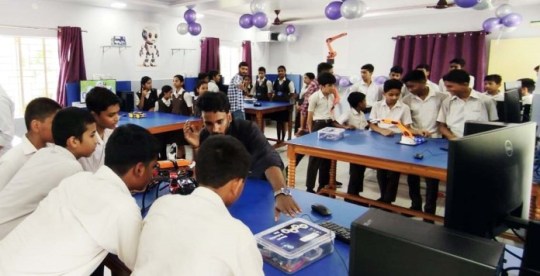
View On WordPress
#शिक्षा#Dimna Road Mango#education#future-ready education#Hands-on Learning#ICSE curriculum innovation#Robotics and AI Lab#RVS Academy Jamshedpur#school infrastructure development#STEM initiatives#student technology projects#technological skill development
0 notes
Text
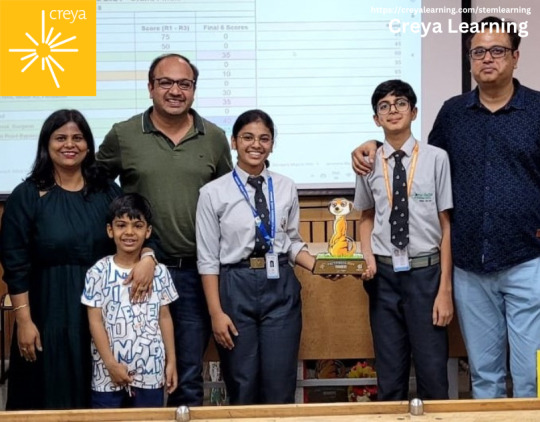
Creya Learning & Research the pioneer and most awarded STEM learning and Design Studio Program inspires 50,000+ school students every day to become inventors and innovators by working on projects across diversemanipulative sets from Robotics to Engineering design to Coding to Cameras and IoThttps://www.creyalearning.com/stemlearning/
#ai coding for schools#stem lab companies india#robotics lab#top stem learning company india#best coding program for schools#3d printing projects for schools#iot arduino projects for schools#best stem learning company india#innovation labs for schools#design lab for schools
0 notes
Text
Absolutely fascinating development from Creative Machine Lab at Columbia Engineering - and an astonishing accompanying video - of their expressive robot face, which brings an exciting advancement in nonverbal communication - facial expressions - in which robotics has rather lagged behind somewhat.
A lot of interactions are predicated upon recognising and responding to the emotional state of the potential conversant, and Emo has that ability of preemptively applying an appropriate facial expression based on AI interpretation in real-time of an individuals nonverbal tells.
It's another piece of the puzzle towards emoting machines, smoothing our interactions with and imbuing trust in our forthcoming synthetic companions and assistants.
#techxplore#technology news#ai#artificial intelligence#robotics#cybernetics#creative machine lab#columbia university#columbia engineering
1 note
·
View note
Text
Robotics Curriculum for Schools
Robotics has become an integral part of modern education, offering students a hands-on way to learn STEM concepts. Implementing a Robotics curriculum in schools can be a rewarding experience, but it requires careful planning and execution.
Step 1: Setting Objectives
Before implementing a Robotics curriculum in schools, we should define clear objectives. These objectives could include improving students' problem-solving skills, enhancing their understanding of STEM concepts, or preparing them for future careers in technology.
Step 2: Choosing the Right Equipment
Selecting the right robotics kits is crucial. Schools should choose kits that are age-appropriate, durable, and easy to use.
Step 3: Training Teachers
Teachers play a crucial role in the success of a robotics curriculum for Schools. Schools should provide teachers with training on how to use the robotics kits and integrate them into their lessons effectively.
Step 4: Integrating Robotics into the Curriculum
Integrating robotics into existing subjects can help reinforce learning and show students the real-world applications of STEM concepts. For example, students could use robotics to simulate environmental monitoring in a science class or explore geometry concepts in a math class.
Step 5: Providing Support and Resources
Schools should provide ongoing support and resources to both teachers and students. This could include access to online tutorials, troubleshooting guides, and technical support for the robotics kits.
Step 6: Assessing Student Learning
Assessment is an essential part of any curriculum. Schools should develop assessment tools that measure students' understanding of robotics concepts and their ability to apply them in real-world situations.
Conclusion
Introducing a robotics curriculum for schools can be a transformative experience for students, helping them develop critical thinking, problem-solving, and teamwork skills. By following these practical steps, schools can successfully implement a robotics curriculum and prepare their students for the challenges of the future.
The Role of Robotics Companies in Curriculum Development
Robotics companies play a crucial role in developing robotics curriculum for schools. They provide educational kits, software, and resources that make it easier for educators to incorporate robotics into their classrooms. These companies also offer teacher training programs to ensure educators have the necessary skills to teach robotics effectively.
Enhanced Learning Experience
One of the key benefits of robotics curriculum is its ability to provide students with a dynamic and interactive learning experience. By working with robots, students can apply theoretical concepts in a practical experiment, thereby reinforcing their understanding of STEM subjects. This hands-on approach not only makes learning more enjoyable but also improves retention and comprehension of complex ideas.
Fostering Creativity and Innovation
Robotics curriculum for schools encourages students to think creatively and innovatively. By designing, building, and programming robots, students are challenged to come up with unique solutions to problems, fostering a spirit of innovation. This creative thinking is a valuable skill that can benefit students in all areas of their academic and professional lives.
Developing Critical Thinking and Problem-Solving Skills
Robotics curriculum in schools also helps develop critical thinking and problem-solving skills. As students work on robotics projects, they are required to analyze problems, identify solutions, and implement them effectively. This process helps students develop a systematic approach to problem-solving, a skill that is invaluable in both academic and real-world settings.
Promoting Collaboration and Teamwork
Another key benefit of robotics curriculum is its ability to promote collaboration and teamwork among students. Robotics projects often require students to work in teams, where each member has a specific role to play. This collaborative approach not only improves students' communication and interpersonal skills but also teaches them the importance of working together towards a common goal.
Preparing Students for the Future
By integrating robotics into school curriculum, educators are preparing students for the future. In an increasingly technology-driven world, the ability to understand and work with robots will be a valuable skill. Robotics curriculum equips students with the knowledge and skills they need to succeed in a rapidly evolving technological landscape.
STEMROBO is at the forefront of providing end-to-end solutions to K-12 students.
In schools, our robotics lab setups create an environment where students can engage in hands-on learning. They can delve into the captivating world of robotics, sparking their interest and nurturing their STEM skills. Robotics is not just for adults; it's an educational and thrilling experience for kids too. Our robotics programs for children are designed to meet their needs and interests, providing a platform for them to explore and develop a passion for technology and innovation.
At STEMROBO, we offer AI and robotics labs that complement each other. Our AI and Robotics Lab is a unique space where students can discover the connections between these two fields. We provide schools with a comprehensive robotics and AI curriculum, enabling students to thrive in the digital era.
Our robotics curriculum for schools is designed to meet educational standards and cater to students at different levels. Through our robotics labs, we create a dynamic learning environment where students can collaborate, experiment, and innovate.
STEMROBO assists schools in establishing robotics and coding labs. These setups empower educational institutions to offer immersive learning experiences. With our guidance, schools can become centers of innovation and technological progress.
As an AI and Robotics Lab company, we are committed to transforming education through technology. We believe that robotics and AI can revolutionize learning, preparing students for the future. Join us at STEMROBO on this exciting journey of exploration and discovery!
0 notes
Text

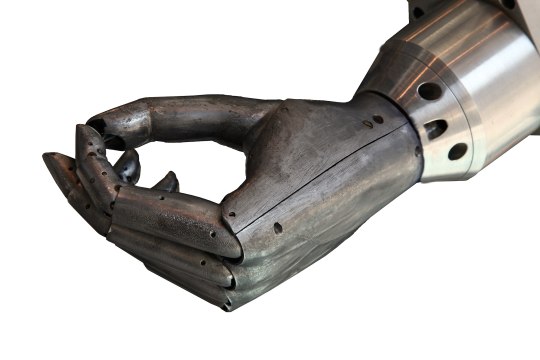
Minsky's MA-3 Arm with Belgrade Hand
Marvin Minsky, a pioneer in artificial intelligence research and co-founder of the MIT Artificial Intelligence Laboratory, designed this robotic arm with the aim of developing a computer system that could see and independently locate, grasp, and manipulate objects. Fabricated by William Bennett and used between 1965 and 1972, this “Tentacle Arm” could be controlled by a digital PDP-6 computer, was powered by hydraulics, had twelve joints (8 degrees of freedom), and was strong enough to lift a person. This work inspired Minsky's seminal 1986 book The Society of Mind, which explored the nature of intelligence and the diversity of mechanisms involved in thought, memory, and language. (Source: MIT Museum.)
#belgrade hand#robotics#cybernetics#marvin minsky#MIT#MIT museum#MIT AI Lab#MIT Artificial Intelligence Laboratory#MIT AI Laboratory#AI#artificial intelligence#prosthetics
1 note
·
View note
Text
High-tech robotic chemistry equipment is commonly used in laboratories to suck up, squirt out, heat, shake and do other things to tiny liquid samples with exacting precision over and over again. Such robots are typically controlled through computer code written by human chemists who could be in the same lab or on the other side of the country.
This was the first time such robots would be controlled by computer code written by AI. Intelligence-driven system was able to autonomously learn about certain Nobel Prize-winning chemical reactions and design a successful laboratory procedure to make them.
The most complex reactions Coscientist pulled off are known in organic chemistry as palladium-catalyzed cross couplings.
The four-person research team includes doctoral students Daniil Boiko and Robert MacKnight.
Transformer-based large language models are making significant strides in various fields, such as natural language processing, biology, chemistry and computer programming.
#science article#chemistry#ai#robot#lab partners#science research#ai learning#laboratory testing#computer programming
0 notes
Text
just saw someone say logan is fully AI generated and i kdndkdnd dncxnd d
0 notes
Text
🩻.
#there’s something about creating these character ai bots that make me want to romanticize the process#flesh it out and write it as a fic like i envision myself (could be reader) in a lab or a chamber trying to make the perfect prototype#multiple trials and errors and all those long ass processes until they ultimately make the perfect robot or ai or wtvr#idk it feels so cool to me having smth answer completely to how i programmed it too is getting to my head and its too cool for me to process#toff.txt
1 note
·
View note